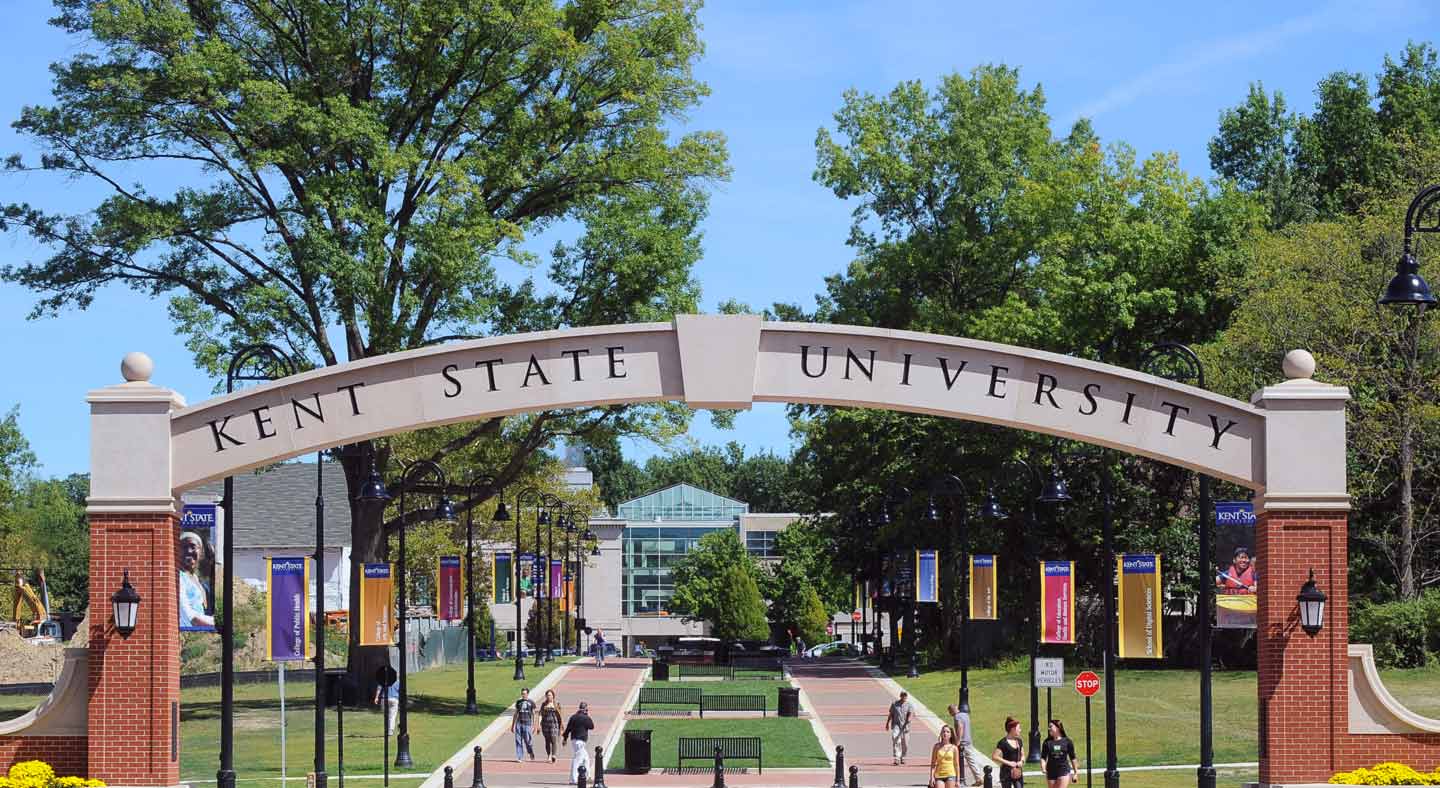"The savings that came from [OARnet’s VRF service] is really a big factor. Instead of buying 20 different chunks of bandwidth at a higher rate for a lower speed, we are aggregating all of our locations together to get more bandwidth in a single service at a lower rate."
—Jason Wearley, executive director of information technology infrastructure services and support, Kent State University

KENT STATE UNIVERSITY IS HOME for students at eight different campuses, more than any other Ohio institution of higher education. With one of the largest regional campus systems in the nation, Kent State delivers an academic experience equivalent to their main campus counterparts to more than 12,000 regional campus students, but closer to home. The regional campus experience includes the same virtual learning and Internet environment, thanks to network cloud adoption.
About four years ago, each of Kent State’s regional campuses had its own connection through individual contracts with Internet service providers for both bandwidth and last-mile circuits. Not only was this costly and complicated, but it limited the ability to leverage campus wide infrastructure services consistently across the regional system.
To aggregate bandwidth and eliminate the need for stand-alone connectivity at each of Kent State’s eight campuses, as well as at eleven additional university-owned locations across the state, OARnet provided the university with a virtual routing and forwarding (VRF) service. This allowed the university to bring all their regional and remote location network paths into a privately routed cloud within the OARnet network, eliminating the need for multiple individual network connections. The VRF through OARnet provides automatic failover redundancy for both campus Internet and phones and offers a secure, cloud-based environment that eliminates the need for additional encryption.
The new regional configuration allows Kent State to have what is essentially a unique regional network, supported by the large OARnet backbone.
“From our perspective, it’s all one network,” said Tom Bordonaro, senior network engineer at Kent State.

Bandwidth requirements have rapidly increased over the past 4 years. At the beginning of 2011, Kent had about 450 Mbps of internet bandwidth, split between the Kent campus academic network, Kent resident hall network, and the individual regional networks. In summer 2011, Information Services made the strategic decision to aggregate the bandwidth to a single source with OARnet and increased to 1 Gbps. The regional network was migrated to use a last mile circuit from local providers to OARnet locations to connect to the VRF. Since these changes, the bandwidth needs have grown to 4 Gbps, almost a 1000 percent increase since 2011.
“The savings that came from that is really the biggest factor,” said Jason Wearley, executive director of information technology infrastructure services and support at Kent State. “Instead of buying 20 different chunks of bandwidth at a higher rate for a lower speed, we are aggregating all of our locations together to get more bandwidth in a single service at a lower rate.”
The virtualized network also allows the university to maximize the capacity of the network, depending on the time of day. During regular business hours, more bandwidth is allocated to administrative buildings, allowing university operations and academic processes to take place without being affected by residential activity. In the evenings, residence halls receive bandwidth priority, as most campus operations are closed, and students can maximize the network for their homework and, of course, lifestyle needs.
“It’s a reality: At peak, about a third of our bandwidth is used by Netflix,” Bordonaro said. “But you can’t take that away.”
Certainly, students are not slowing down on Internet usage, especially through wireless devices. Bordonaro said they budget for three devices per seat, and see up to 80,000 unique devices on the network each week during peak times of the year.
“There’s a growing network of devices, and it’s an expectation that [the network] is going to work, and it’s going to work fast,” Wearley said.
The capacity of OARnet’s 100 Gigabits-per-second fiber-optic backbone certainly helps the university meet this expectation. It also allowed Kent State to bolster its campus safety program through network-based cameras at each campus. Wearley said they have installed nearly 190 cameras across the network in the past year. The VRF network enables Kent State to do this without purchasing additional equipment, and, with the available bandwidth, there is no problem pushing the 50-megabit stream from the cameras across the network to the main campus.
Moving forward, Bordonaro said he is currently working to secure wireless tunnels that will create a secondary last-mile circuit to each campus for redundancy. These also would be linked back to a connection point on the OARnet backbone.
“Bottom line is, we have the redundancy within the overall fabric of that regional network,” Bordonaro said. “If there are issues, we are able to react and reroute.”